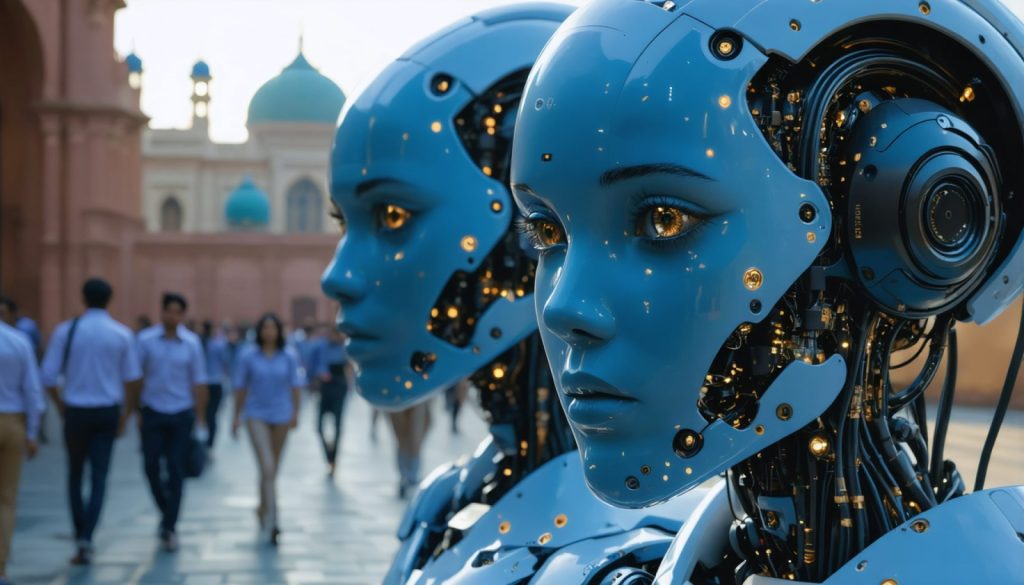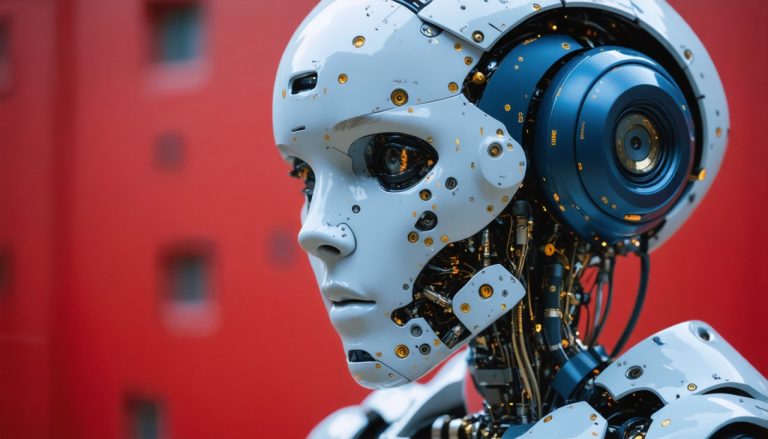
- India is rapidly developing an ambitious AI ecosystem to enhance key industries like agriculture and healthcare.
- The IndiaAI Mission commits $1.1 billion over five years to boost AI capabilities and infrastructure, focusing on workforce development.
- AI centers of excellence are driving innovations like precision farming tools and predictive maintenance systems.
- Successful AI integration requires reimagining business models, emphasizing employee engagement and transformative change management.
- Challenges include expanding AI from pilot programs to full-scale adoption, requiring strategic alignment with business goals.
- Key to AI’s success is establishing a responsible AI task force and fostering cross-functional collaboration.
- Ongoing AI training and addressing job displacement concerns are vital to achieving workforce cooperation.
- India’s AI transformation holds potential for significant efficiency gains and competitive advantages for businesses.
Emerging as a global force in artificial intelligence, India is crafting an ambitious AI ecosystem designed to catapult its industries forward. With the government leading an initiative of unprecedented scale, the country aims not just to integrate AI but to redefine how business operates.
The landscape is vivid with the establishment of AI centers of excellence enhancing innovation in vital sectors like agriculture and healthcare. These centers are not just think tanks but the crucibles where AI advances like precision farming tools and predictive maintenance systems are conceived and refined. At the heart of this movement lies the IndiaAI Mission, a $1.1 billion commitment over five years that underscores the government’s resolve to boost AI capabilities, create a skilled workforce, and lay down a digital infrastructure foundation.
Yet, India’s AI revolution is not solely about installing algorithms and smart sensors. At its core, it demands a shift in the workforce and business fabric. Organizations are learning that embracing AI at scale involves a reimagining of their operating models. Successful integration isn’t merely about technology; it’s about creating a symphony of AI-driven processes that resonate through every layer of business operations.
Research highlights that a salient factor in AI success stories is not just technical prowess but a holistic approach—one where employee engagement and transformative change management take center stage. Firms thriving in this space have robust change strategies that involve employees in AI-related decisions, creating a culture where AI adoption is inherently understood and valued.
The challenge remains formidable. India’s enterprises, skilled at experimentation, face the hurdle of extending AI from isolated pilots to full-blown, enterprise-wide adoption. The pathway to success lies in deeply embedding AI into the business fabric. It’s about making AI a core business enabler, rather than a mere augmentative tool. This demands strategic alignment with business goals and securing executive buy-in to ensure continued support and alignment with organizational objectives.
Essential, too, is the creation of a responsible AI task force to govern data ethics and compliance. Yet, the real power comes from fostering cross-functional collaboration. AI’s potential is maximized not when it operates in silos but when it becomes a shared endeavor across departments, accelerating adoption and minimizing trial and error.
Organizations must focus on engaging their workforce through continuous AI tool training and robust change management strategies. Addressing worker concerns over job displacement while building awareness of AI’s role in enhancing, not replacing, job functions remains crucial.
India stands at the precipice of an AI-driven transformation that could unlock unparalleled efficiency gains and competitive advantages. Those companies that navigate this labyrinth successfully won’t just implement AI—they’ll revolutionize their business models, setting a new global standard. For India, AI isn’t just a tool; it’s a transformation strategy. And for businesses that align with this vision, the rewards promise to be profound and lasting.
The AI Revolution in India: New Horizons, Challenges, and Opportunities
Exploring India’s AI Ambitions Further
India’s drive toward becoming a global leader in artificial intelligence (AI) is garnering attention, not just for its scale but for its potential to transform key industries. The nation’s AI initiatives, including the $1.1 billion IndiaAI Mission, are designed to build robust digital infrastructure, nurture a skilled workforce, and establish AI as a core component of business operations. However, beyond the broad goals, several other aspects warrant attention.
How-To Steps & Life Hacks for Successful AI Integration
1. Strategic Planning: Align AI initiatives with organizational goals. Establish a roadmap for AI adoption that includes short-term wins and long-term benefits.
2. Invest in Training: Upskill current employees with AI competencies and hire dedicated AI talent to bridge knowledge gaps.
3. Foster a Culture of Innovation: Encourage innovation by creating cross-functional teams and promoting a culture open to experimentation and iterative development.
4. Ethical AI Use: Develop a responsible AI task force to govern data ethics, ensuring that AI deployment is transparent and aligned with ethical standards.
Real-World Use Cases
– Agriculture: Precision farming using AI can optimize crop yields through predictive insights on weather patterns and soil conditions.
– Healthcare: AI-powered diagnostics can enhance early detection of diseases and tailor personalized patient care.
Market Forecasts & Industry Trends
The global AI market is projected to grow from $207.9 billion in 2023 to $1,394.3 billion by 2029, with a compound annual growth rate (CAGR) of 36.2% (Fortune Business Insights). Within this, India’s AI initiatives could position the country as a major player, particularly in sectors like fintech, healthtech, and agri-tech.
Challenges and Limitations
– Data Privacy: Ensuring data privacy and compliance in AI systems remains a primary concern.
– Workforce Displacement Fears: Addressing apprehensions regarding AI-induced job displacement is critical.
– Scalability Issues: Translating AI successes from pilot projects to enterprise-wide adoption poses a scalability challenge.
Pros & Cons Overview
Pros:
– Enhanced operational efficiency
– Competitive edge in global markets
– Improved decision-making through data-driven insights
Cons:
– High initial costs
– Integration complexity
– Potential for workforce disruption
Insights & Predictions
As AI technologies evolve, India will likely see an increase in AI startups and investments in AI-related educational programs. The adoption of AI across industries could lead to a surge in productivity and innovation, potentially adding up to $957 billion to India’s GDP by 2035 (Accenture).
Actionable Recommendations
– Engage Leadership: Secure executive buy-in to drive AI initiatives with clear value propositions.
– Pilot Programs: Start with pilot programs to test AI applications in controlled environments before scaling.
– Continuous Monitoring and Feedback: Implement feedback loops to continuously assess AI performance and impact.
Conclusion
For Indian businesses, AI isn’t just a technological upgrade—it’s an transformative strategy poised to redefine industries. By strategically navigating AI integration, maintaining paramountcy of ethics, and investing in human capital, businesses can harness AI’s full potential.
For more insights on emerging technologies, explore Google.



